#Language Comprehension
Explore tagged Tumblr posts
Link
11 notes
·
View notes
Text
Just because I'm usually verbal and know some big words doesn't mean I always understand language. Even 'basic stuff' and it changes from day to day.
Sometimes The Illiad And The Odyssey is easy, other days Junie B. Jones is hard. Sometimes I say 'economical' and 'medical trauma' and 'expository', but other days I can only manage 'money' and 'bad doctors' and 'talk-y', sometimes not even that.
And no I don't have any control over if I use 'baby words'. Maybe it makes you uncomfortable to hear a teen say 'tummy' or 'potty', but that's not really my problem. Sometimes my brain can't form words like 'stomach' and 'bathroom', or even if it can my mouth can't make the sounds. And I deserve to communicate my needs and wants even when it can't.
Reading can be hard, hearing can be hard, writing can be hard, talking can be hard. Sometimes doing something as 'small' as trying to comprehend language can be exhausting, excruciating, impossible. And some people are always like that.
And of you can't support and recognize us, then you're not an ally to any disabled person, any autistic, any developmentally disabled person, any intellectually disabled person, etc.
#autism#actually autistic#developmentally disabled#neurological disability#communication skills#communication struggles#reading skills#writing skills#language#language comprehension#disability#disabled#semi rant
17 notes
·
View notes
Text
Speech therapy plays a crucial role in helping individuals regain their ability to communicate effectively, especially after experiencing speech-related challenges due to injury, illness, or other conditions. Therapy services in Miami, Florida encompass a wide range of specialties, including speech, aimed at improving patients’ overall quality of life.
3 notes
·
View notes
Text
Your mind is a labyrinth of memories, emotions, and language—all woven together by the intricate workings of the temporal lobe. Ever wonder how you recognize a voice, recall a childhood moment, or feel the weight of a single word? In our latest post, we explore the temporal lobe, the part of your brain responsible for memory, language comprehension, and emotional processing. Discover how this powerhouse of cognition shapes your perception, decision-making, and even your sense of self. 🔗 Read more on Poetic Bipolar Mind now! #Neuroscience #BrainPower #MentalHealthAwareness #CognitiveScience #PsychologyMatters #Memory #LanguageProcessing #EmotionalIntelligence #Mindfulness #BrainFunction #PoeticBipolarMind #WellnessJourney #HealingThroughKnowledge #ThoughtfulLiving

View On WordPress
#brain function#cognition#innovation in health#language comprehension#memory#neuroscience#psychology
0 notes
Text
Communication is a fundamental skill that can greatly impact a child’s development, especially for those with autism. ABA therapy in Alpharetta, Georgia is designed to address this crucial area by using evidence-based techniques to enhance communication abilities. Applied Behavior Analysis (ABA) focuses on breaking down complex communication skills into manageable steps, making it easier for children to learn and apply them in everyday situations. This structured approach helps children build confidence and interact more effectively with their peers and family members.
0 notes
Text
Get Unstuck and Speak Hebrew Like a Native in 2024!
Hey there, future and current Hebrew speakers!
Are you tired of feeling stuck in your Hebrew learning journey? Do you dream of chatting effortlessly with native Israelis but find yourself lost in translation? It's time to break free from the language barriers with **Practically Speaking Hebrew**!
**Why Choose my Course?**
**Interactive Lessons**: Say goodbye to boring apps! My engaging lessons make learning Hebrew fun and interactive.
- - **Native Insights**: Learn the authentic way Israelis speak – common, expressions, and all!
- **Real-Life Scenarios**: Practice Hebrew in situations you'll actually encounter, from ordering falafel to making friends at the beach.
**What Makes Me Different?**
- **Motivating Community**: Join a community of like-minded learners who are all in this together. You'll never feel alone in your journey.
- - **Expert Guidance**: I am passionate about helping you succeed and will be with you every step of the way.
- **Flexible Learning**: Learn at your own pace with my on-demand content. Whether you're a night owl or an early bird, I’ve got you covered.
### Ready to Get Unstuck?
Imagine speaking Hebrew with confidence and flair, just like a native Israeli. It's not a dream – it's your 2024 reality! Don't let another year go by feeling frustrated.
Join **Practically Speaking Hebrew** today and watch your Hebrew skills soar!
🚀 **Sign Up Now and Start Speaking Hebrew Like a Pro!** 🚀
Visit [learn.hebrewbyinbal.com](https://learn.hebrewbyinbal.com) to get started. Your Hebrew-speaking adventure awaits!
Hebrew by Inbal – Making Hebrew Fun, Practical, and Unstoppable!
#learn hebrew#jumblr#languages#language#language classes#language comprehension#langblr#hebrew#learnhebrew#hebrew langblr
0 notes
Text
Speech therapy is a vital component of rehabilitation for individuals facing communication challenges. In this blog, we’ll explore the transformative power of speech therapy and its role in improving overall well-being.
0 notes
Text
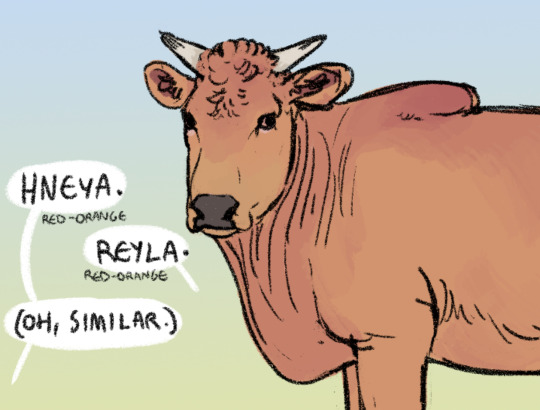

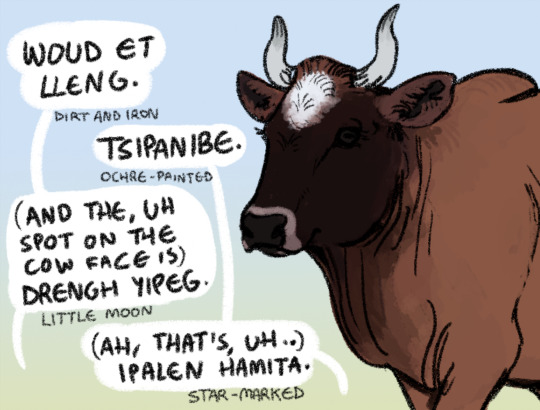
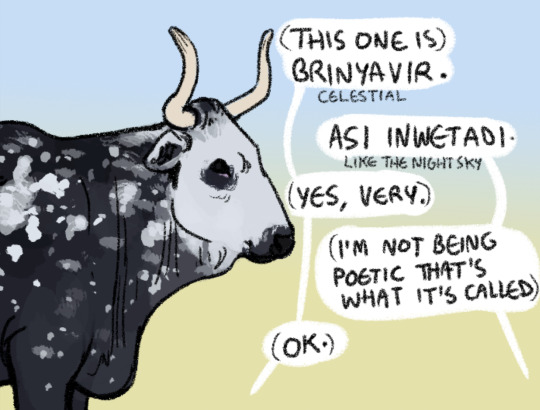
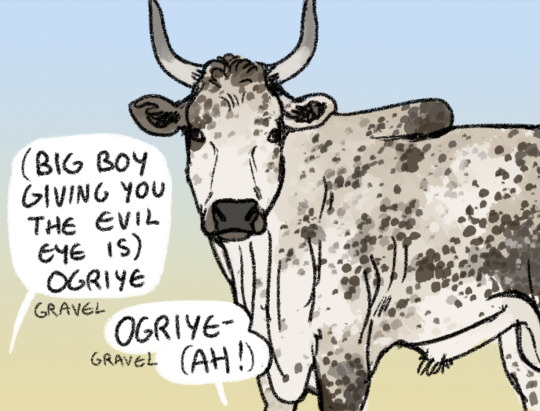
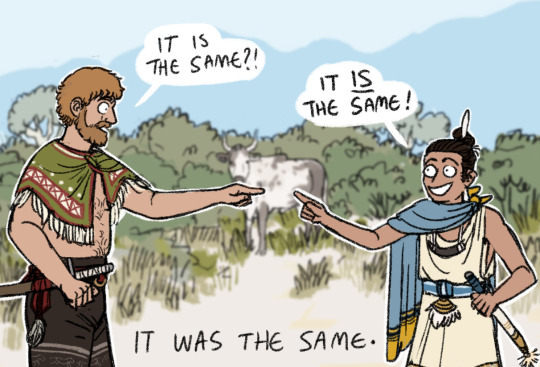
Comparing livestock color-words.
Both the Chenahyeigi and Wardi languages are derived from peoples who have been pastoralists for millennia, and both have an absolute ton of words for livestock coloration.
Both languages have had at least some mutual influence for about a thousand years (to varying extents by dialect, depending on geography/trade connection) so you'll see similar or identical words crop up here and there.
THE WORDS:
Hneya - [hne:ʝɑ] or [hne:jɑ] (whether the ʝ sound is retained in speech and to what extent varies by dialect)
Straightforwardly refers to bright reddish-orange color, but is mostly used for animals rather than other orangeish things. The word Was probably influenced by an older form of the Wardi 'reyla', and absorbed with the introduction of orange colored cattle. It may have been merged with the Chenahyeigi '(h)ne', which is the root of several red color-related terms.
Reyla - [rejlɑ]
This is a Wardi word for most reddish-orange hues in general. When applied to livestock, it refers to solid orange coats without spotting/masks/notable countershading.
Fels akhri - [fels] [ɑ:khɾi]
Translates readily as 'storm cloud' (the 'storm' here specifies thunderstorms). When applied to livestock, it describes fur that is rich dark blue-gray with white guard hairs.
Aganne - [ɑgɑ:ne]
This doesn't actually translate to 'night sea' in a straightforward manner, but as a color word it's poetically associated with dark seas, at night or in storms. When used for livestock, it describes this coloration exclusively.
Woud et lleng - [woʊd] [ɛt] [ɬeŋk]
Woud is the word for rich moist soil specifically, lleng refers to laterite and its association with iron deposits. This phrase is used to describe livestock with dark brown heads and and orange-brown bodies.
Tsipanibe - [t͡sipɑnibe]
This would be more literally translated as 'ochred'. Many Wardi words with the -ibe stem from verbs or nouns modified to indicate that the subject matter has 'received' an action or concept. (Examples of such words are long-established linguistically, you can't just add '-ibe' to any noun or verb). This one takes the root 'tsipan' (ochre) and applies it to the subject matter (cattle coloration).
Livestock with a dark brown or black head and orange-brown body are given this description, the idea being that their bodies look like they've been painted in ochre. This word is extremely rare outside of this context (you would usually just say the full 'ochre-painted' to convey this idea for other things)
Drengh yipeg - [dɾeŋg(h) yɪpɛ:g]
This is pretty straightforwardly 'little moon'. Yipeg comes from the same root as the Wardi 'hippe' for 'small', while drengh refers to the appearance of the moons in the sky (rather than the gods they embody). It's used to describe small round white blaze marks.
Ipalen hamita - [ipɑlɛn (h)ɑmitə]
Straightforwardly 'star marked', used for small round white blaze marks. Wardi actually does have a 'moon marked' (ipalen amit) to describe round white blazes that entirely cover the animal's forehead.
Brinyavir - [bɾi:nʝɑvir] (ʝ is retained for this word in most dialects)
This one is not directly translatable, 'celestial' or 'heavenly' just function closely enough. The word conceptually relates to stars but most specifically describes a layer of sky in which the afterlife rests (brinyavir is part of the phrase I translate as 'celestial fields'). The cattle there are said to have these markings. The stars in the night sky are sometimes playfully described as the spots of these cattle (though not literally, in Chenahyeigi cosmology stars are spirit-inhabited bonfires lit along pathways through the heavens).
As a color word for livestock, brinyavir refers to this rare (I Think nonexistent irl) white-spotted black coloration, due to both resembling the stars and the cattle that are moved among them.
Asi inwetadi - [ɑsi in:wetɑ:di]
This directly means 'like night sky', and is applied to this coat pattern with a similar underlying logic- it looks like a starry night sky. You will often see asi (like/akin to) retained in place or animal names like this, and it is sometimes part of names for people (the name Asinya is derived from a contracted 'like the sun').
Ogriye - Chenahyeigi: [oʊ:gɾije] Wardi: [oʊgɾi:je]
This word is (or was) a way to say 'gravel' or 'gravelly' in both Chenahyeigi and Wardi, and is pronounced very similarly in both (with the only significant difference being emphasis)
In Chenahyeigi it is a loanword from the Wardi language family, most likely received in the exchange of cattle of this coloration. It is retained in general speech as a word for gravel, more specifically the adjective 'gravelly'.
The word is mostly obsolete in contemporary Wardi, speakers do not know it used to mean 'gravel' (though it sounds close enough to assume a connection, the word is 'ogri') and exclusively use it to describe this livestock coloration (one of the more common among Wardi native cattle).
---
Also here's some cow lore.
There's some fairly tremendous diversity in Wardi cattle herds, given they have genetic influence from at least two separate aurochs domestication events (also distant and negligibly minor influence from one instance of bison domestication) and from multiple relatively isolated domestic cattle populations. Present day herds within Wardi provincial territory near-ubiquitously have at least some ancestry from the kulustaig and the Burri tepang cattle.
The ancestors of the Wardi native cow have been in the region for at Least 5,000 years. Burri cattle Possibly could have had tiny, isolated introductions between 2500-3000 years ago (this is extremely unlikely, but maize Was probably introduced by seafaring proto-Burri peoples at this time) or at more recent points since, and the tepang was certainly introduced during Imperial Burri occupation. High quality cattle are also occasionally received in diplomacy with the present-day Different Entity that is the Burri Republic. The kulustaig cattle arrived with proto-Finnic migrants starting 1500 years ago, and is the biggest external genetic influence on Wardi herds. Small populations of Yuroma native cattle arrived with migrants 540 years ago, though these have been wholly absorbed into Wardi herds, with their biggest trace being genes for naturally polled horns. Some Finn cattle were extracted in the recent two decades of Wardi occupation, though not enough to have a noteworthy genetic impact on any herds.
Most of the cattle in this post show predominantly Wardi native cattle + kulustaig ancestry (this takes place in the Ephenni riverlands, where the ancestry of herds tends to be around 2:1). The one with the blaze has a delicate sloping muzzle that suggests Burri tepang ancestry, and also likely has a wild aurochs grandparent (the white ring around the nose is a telltale sign, as it usually vanishes within a few generations of introgression).
Diversity in color and coat pattern is culturally favored for Wardi cattle herds, and selective breeding for aesthetics is usually limited to the purpose of preserving unique coats. The average herd tends to be very colorful, though the one shown here is a bit of an outlier, the universe having mysteriously put in place perfect conditions to compare the words for a variety of coat patterns.
#My marginal comprehension of the IPA has advanced somewhat. For those who don't know : indicates the vowel/consonant beforehand#is long and () means a sound is marginal/optional/not articulated#The 'h's you see at the end of a lot of Chenahyeigi words are usually soft unvoiced exhalations and very subtle#It's part of the accent but not doing it doesn't change the meaning of the word in most cases#The Wardi language has a tendency of dropping H sounds at the beginnings of words over time/in certain dialects#(especially when followed by the [i] vowel. A lot of people pronounce hippegalga as just ippegalga) and in a lot of words#pronunciation of leading H's is essentially optional#One aspect of Wardi formal register is always enunciating these droppable H's
3K notes
·
View notes
Text
The Reading Rope Unwound: Translating Science into Special Education Strategies
The challenges of imparting proficient reading skills are amplified in a middle school special education setting. With the insights gained from the LETRS training, the task of blending theory with practical instructional strategies becomes a promising venture. The objective is clear: to build a bridge from the foundational theories of reading to actionable teaching strategies that cater to the…
View On WordPress
#Classroom Activities#Context Processor#Decodable Texts#Four-Part Processing Model#Guided Reading#Homophones#Language Comprehension#LETRS Training#Meaning Processor#Middle School Intervention#Multiple Meanings#Multisensory Teaching#Orthographic Processor#Phonological Processor#Proficient Reading#reading comprehension#Reading Rope Model#Special Education Strategies#Teaching Resources#Word Recognition
0 notes
Text
That pseudo-French language turning all the subtitled Ghor dialogues into audiovisual torture for French speakers is the funniest thing Star Wars has ever done
#they put so much thought into making up a fake language too! lmao#andor season 2#spoilers#<- if you consider fake frenchness a spoilerworthy bit of content#i only speak french at a b2 level but i also got confused with the subtitles at times when i was going by ear#legitimately fooled my brain into thinking this is a shitty listening comprehension test. yeah that's what those guys sound like
529 notes
·
View notes
Note
Nine is Sonic and Shadow's angsty emo kid
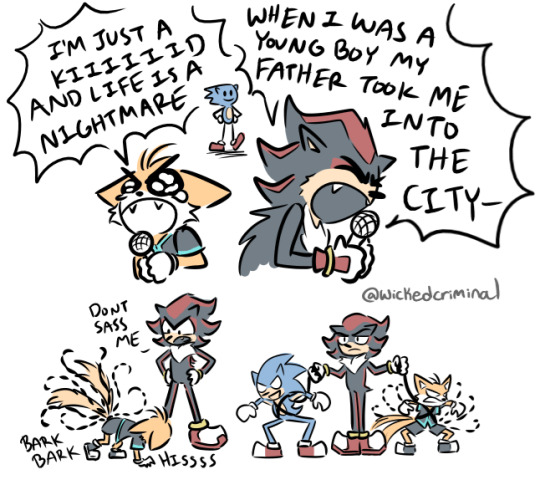
I can see it
#sometimes a family is you (track and field star) your worstie edgelord goth bf and your angry killer dogboy child#nine channeling mangy to spew curses at shadow in languages beyong his comprehension#sonic prime#shadow the hedgehog#miles nine prower#sonic the hedgehog#nine the fox#my art#ask
307 notes
·
View notes
Note
Hi! I’m starting to learn French and one thing that’s both cool and weird to me is how everything is gendered in a way (referring to someone/whose saying the statement/etc.) and I was wondering how that relates to people who identity as non-binary or gender fluid in France? Are there equivalents to they/them pronouns or neo pronouns in French?
I do plan on doing my own research about this but I figured since I love your blog and you’re really open about different cultural lgbtq+ communities I’d try here first!
That's an awesome question... with a complicated answer lmao. So buckle up and bear with me !
Basically, you can't be non-binary in French. The community found ways to do it but it's not mainstream. Most of the time, they're going to get misgendered or will have to misgender themselves to get understood.
Some things I'm going to list here are not proper French. Actually, they can even be forbidden in some circumstances, according to the law (the use of inclusive language, and more specifically le point médian, was made illegal in schools in 2021 for ex) or simply because your company etc forbids it. So use this wisely, there is a time and place for inclusive language in France.
That said, things have greatly developed over the last two decades. Which was partly because of the queer community and mainly because of feminists, who are tired of the way French erases women. More and more people are using inclusive language, at least in some circumstances and circles (for ex, i wrote my master's thesis in inclusive language and it was accepted bc i was in a leftist faculty). And inclusive language is debated as a serious issue now, which is saying something.
So, how do you use inclusive language in practice?
There are different ways, as it's informal and mostly new. People are still testing new things and trying out various methods. You can stick to one or alternate or mix them up.
Pronouns
Officially, there isn't a gender neutral pronoun. We don't have an equivalent to they. You're either talking about a man or a woman. If it's both, you use masculine pronouns ("masculine trumps feminine" rule). Same thing if you don't know the gender of the person ("masculin générique").
The most common neopronoun is "iel" (plural : iels), which is obviously a contraction of the masculine pronoun "il" and its feminine equivalent "elle". It works for nb folks or to avoid talking about someone's gender or to refer to a group of men and women. So it's equally used by the queer community and feminists.
I'm pretty sure other neopronouns exist but I can't think of any at the top of my head.
Choosing the right words
Sometimes, inclusive language is just about learning to use alternatives.
Instead of using gendered words, you can choose to use gender-neutral words or words "épicènes", aka words which are identical in their feminine and masculine form. For ex, instead of "homme politique" or "femme politique", you can use "personnalité politique". Personnalité is a feminine word but it's actually gender-neutral as you can use it for women and men alike. "Élève" (student) is épicène, as a female student and a male student are both referred to as "élève". Although épicène words as a gender-neutral option only work in their plural form, as you have to choose either a feminine or masculine article for the singular ("les élèves" is inclusive but it can only be "un" or "une" élève).
As good as this method is, it can be quite limitating. Your vocabulary will be drastically reduced and it can be quite hard to master that kind of speech so you can reach the point where you don't have to think everything over for ages before you open your mouth.
With oral French, you can take it a step further by choosing words that sound the same even if they have a different spelling. Ex, friend is "ami" or "amie" but it's pronounced the same way so if you say it out loud, people can't know how you're gendering it (as long as there isn't a gendered article/word with it ofc).
It avoids misgendering people but the downside is that, as masculine is considered neutral in French, people will often think : no gender specified = masculine. Not even because they're sexist or whatever, it's just so ingrained in our brains that it's a knee-jerk reaction.
That's also why most feminists often prefer to use explicitly feminine words when talking about women. For ex, they prefer the word "autrice" to "auteure" (female writer) because the second one sounds the same as its masculine version "auteur". And as previously mentionned, out loud, people will assume by default you're talking about a man. It's a big debate though, lots of women prefer words that sound masculine - going as far as refusing to use feminine words at all! Which sounds cool and gender-bending as fuck but in reality comes from feminine words traditionally seen as less legitimate and serious. Even today, if you look up the word empress "impératrice" in a French dictionary, the first definition that comes up is "wife of an emperor". "Woman ruling a country" comes second. Using a masculine title to refer to women can also be a way to mock them and show they're not welcome (a french deputy got fined in 2014 because he called the female president of the national assembly "Madame le président" and refused to use the feminine title "Madame la présidente").
Recently the tendency and official guidelines have been to feminize words, so I'd say go with that by default, but respect other people's choice if they specify how they want to be called.
Anyway I'm getting off-track but what I meant was that in French, if you avoid talking about gender, you're automatically erasing women (and nb people). So if you want to include everyone, you need to make it obvious.
Inclusivity as a statement
The most common way to make women and men equally visible is the "point médian" rule, which you can also use to refer to non-binary people as it avoids picking a specific gender.
Basically, it means pasting together the masculine and feminine forms of a word and using dots/middle dots/hyphens/parentheses/capital letters to create an inclusive word. For ex, instead of saying acteur (♂️) or actrice (♀️) for actor, you'll write "acteur.ice". For the plural form, there are two schools of thought : either you separate the feminine and masculine form AND the suffix used to signify the plural, or you don't. Aka, "acteur.ice.s" or "acteur.ices". Personally I prefer the second option because less dots makes it easier to read and faster to write, but it's an individual choice, both work.
There are two major downsides to this method : it only works in writing + it isn't doable for every word, as feminine and masculine words can be quite different and pasting them together that way would be unintelligible. Ex, "copain" and "copine" (friend or boyfriend/girlfriend depending on the context) would give something like "cop.ain.ine"...
You can work around that by choosing alternative words (as previously stated!). And it's still a pretty good method, especially as it works for any type of word (adjectives etc). Some people argue that it's hard to read and ugly but personally I think it's just a matter of habit (although it does pose a problem for people using screen readers). Be aware that it is the most controversial version of inclusive writing, as it's the furthest structure from how languages typically work.
If you don't like dots or want an alternative for oral speech, you can also straight up create new words that sound both feminine and masculine, making them gender-neutral. To use the previous example, "copain" and "copine" become "copaine".
Obviously, this only works if it's obvious which words they're based on. I think it's a great way to make French more inclusive but I'd advise against using it with uninitiated people as it would probably confuse them more than anything. This method is still quite niche.
An inclusive, yet binary language
As you've probably figured out, inclusive language remains quite binary in the way we approach it. It's more about making things both masculine and feminine than transcending gender and creating gender-neutral alternatives. Probably because inclusive language was more often a will to stop women from being erased rather than a non-binary friendly gesture.
Which means, there are also some rules that were created to avoid the "masculine trumps feminine rule" but don't allow room for non-binarity at all. I'll still explain them because they're interesting and you might encounter them at some point.
The proximity rule ("règle de proximité") is one of these. It existed in Ancient Greek and Latin but was dropped in Modern French in favor of the masculine trumps feminine rule. Basically, you gender things according to what's closest in the sentence instead of systematically using masculine words to gender a mixed group. For ex, instead of saying "Les hommes et les femmes sont beaux" you say "Les hommes et les femmes sont belles", as the subject "femmes" is closer to the adjective "beau/belle" than "hommes".
Another method is to systematically use both masculine and feminine words (which I personally find excruciating to write and read). Meaning, instead of writing "Les étudiants mangent à la cantine" (students eat at the cafeteria), you'll write "Les étudiantes et les étudiants mangent à la cantine".
This is mainly for the subject of the sentence : adjectives and such are gendered according to the masculine trumps feminine rule. The point is to explicitly include women, not to make the sentence unintelligible or gender-neutral.
When following this method, you also have to pay attention to whether you put the feminine subject first or the masculine. The rule is to follow alphabetical order. For ex, in "l'égalité entre les femmes et les hommes", "femmes" comes first because F comes before H. But in "Les auteurs et les autrices de roman", "auteurs" comes first because E comes before R. Etc.
This method is common as it's the only inclusive language you can get away with, given that it's a valid way of speaking French. It's even mandatory in some situations now, like in job descriptions for the french administration, in the spirit of gender equality.
So, how do I gender a non-binary person?
In short, you can use the pronoun iel + avoid gendered words and/or use the point médian and/or make up new words.
But keep in mind that if you're not talking to someone familiar with these rules, you'll have some explaining to do. And looots of people are still very anti inclusive language, because they're sexist and/or transphobic, ignorant, language purists, etc. A few years ago it was the thing to be angry about for conservatives and anti-feminists so it's still very controversial. But if you're in a trans inclusive queer space or talking with intersectionnal leftists, go for it !
I hope I covered everything (fellow french, don't hesitate to comment!) and didn't put you to sleep lmao. If you want to see some examples, you can look it up on Wikipedia or check #bagaitte on tumblr (it's the french queer tag) 😉
#it's a slow but steady effort!#the fact that it was accepted by my uni teachers shows how far we've come already#a decade ago it would have probably been dismissed#i don't even know if i was aware this existed a decade ago#😅#anyway THANK YOU for this ask#i hope it was comprehensive and helpful#ask#language inclusif#écriture inclusive#inclusive language#upthebaguette#bagaitte#french#languages
1K notes
·
View notes
Text
Maglor who stayed in Middle Earth all the way through till present day, or close to it, and then for whatever reason finally ends up going back to Valinor, but he has enthusiastically picked up all the modern day curses and slang and sometimes when he talks he's so completely incomprehensible to his family that they're not sure if they want to cry or hit him
aka: Maglor comes back to Valinor and instead of getting a traumatized son/brother back like the expected, they find that Maglor did in fact get over his shit eventually but was just having a blast becoming an agent of chaos and now he's brought all that back with him <3
#atlanta rambles#Maglor#I just had a vision pop in my head of Maglor going *out of his way* to be as annoying as possible#to all of his brothers#no one is safe#Fingon thinks it's fucking hilarious#doesn't understand anything Maglor is talking about but he picks up the curses with enthusiasm#the cursing spreads and you have elves saying “jesus fucking christ” without even the slightest comprehension of who they're referring to#Maglor learned piglatin at one point from some band of children#and spends a solid week convincing his father that there was in fact a country that spoke this language#he drops random history lore all the time#and Finarfin ends up having the concept of democracy and elections explained to him and drops everything#to make it happen#he'd expected the breaking of the world to happen already and he is SICK of being king#he thinks of the most dramatic modern inventions he can and then woefully tells his father#that oh it's just not possible to make it in Aman#no no it's not that he's bad at his craft it's just *impossible* to make#and then he sits back and enjoys the chaos#Maedhros has never been so happy to have a brother back while also simultaneously wishing he would go the fuck back to where he came from#he makes a point about telling Galadriel and Aredhel about the feminist movement#his work there is done#Fingolfin really feels he should be doing something about all this but has no idea what#Maglor looks at him one day and kind of mock thoughtfully goes hmmm#you know I wonder if they based David & Goliath off your disastrous fight and just felt bad for you so they changed the ending#and then he refuses to elaborate on any it#Maglor is a horrible goose#and he is having a FANTASTIC time
67 notes
·
View notes
Text
I remember the behind the scenes video where Rosamund was just like “I’m going to speak Czech now” and I have no way of knowing if it was good or not but she did and I just found someone like “I clicked on a video of Rosamund Pike randomly and she was speaking perfect French for some reason” and then someone responded with a video of her just speaking Mandarin for some reason
a woman who says the most baffling things yet has no language barriers. inspirational in every way
#she has no language barriers but she is still indiscernible#unknowable#the things she says are beyond rational comprehension#I fear it is because we simply cannot understand her True language#rosamund pike#wot cast
70 notes
·
View notes
Text
Japanese Reading Resources for Absolute Beginners
A question I encounter often is "How much Japanese should I study before I can begin reading in Japanese?"
From my experience as a learner and reader myself and from managing a Japanese book club for other learners I can honestly say that you can start way earlier than you probably think!
There are many resources that only require knowing hiragana. Those texts usually teach vocabulary through pictures and only use basic grammar.
Some are even simpler than that: The Japan Foundation's Hiragana Books are great for those, who are still remembering hiragana characters. Every short book introduces only 1-2 new characters, so it's a great reading exercise for those who've just started.
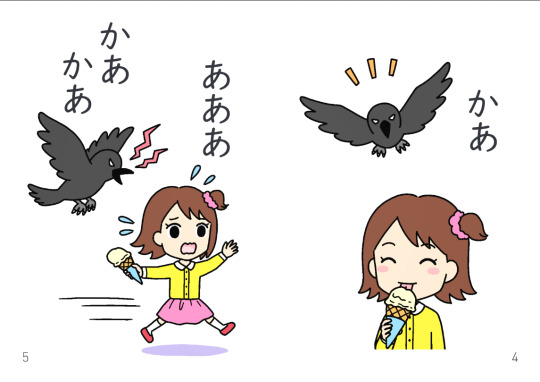
The free graded reader 「どうぞ、どうも」 by the NPO Tagengo Tadoku only uses the words 「どうぞ」 and 「どうも」 to write an entire story. Again, this makes for a great exercise in reading hiragana and understanding context. Another "level 0" recommendation by the same NPO would definitely be 「しろい?くろい?」. This book uses the full range of hiragana characters but the grammar is simple and all used vocabulary is illustrated.

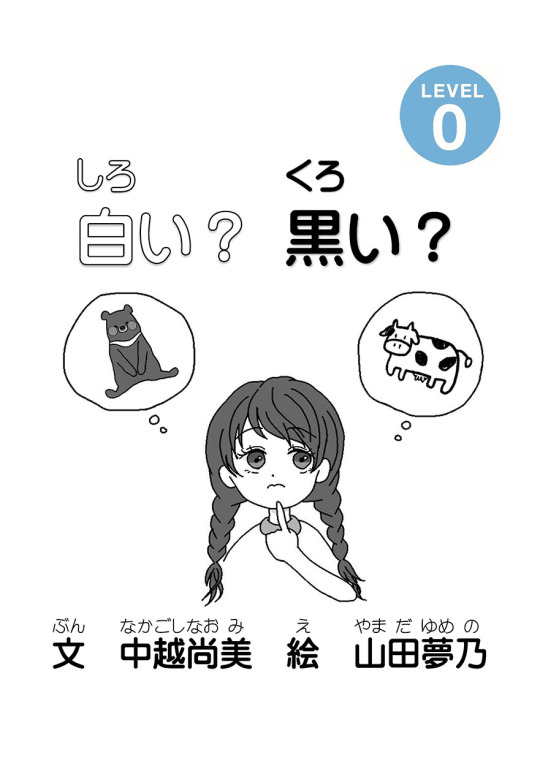
Another site with great resources for absolute beginners is Nihongo Tadoku Dōjō. If you have memorized both hiragana and katakana and know how the particles を and で work you will be able to read this text about stationary (ぶんぼうぐ) and understand everything by looking at the pictures!
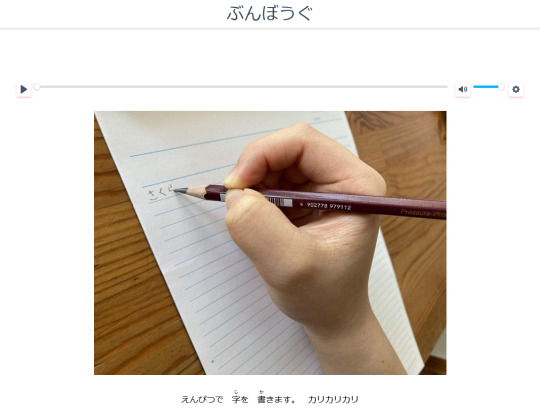
The resources linked so far can all be accessed completely free on the linked websites. If you have the money to spare, please also have a look at the box 「スタート」 from the series reberubetsu nihongo tadoku raiburarī published by the NPO Tagengo Tadoku and ASK (affiliate link). This box includes 8 little books in very simple Japanese.
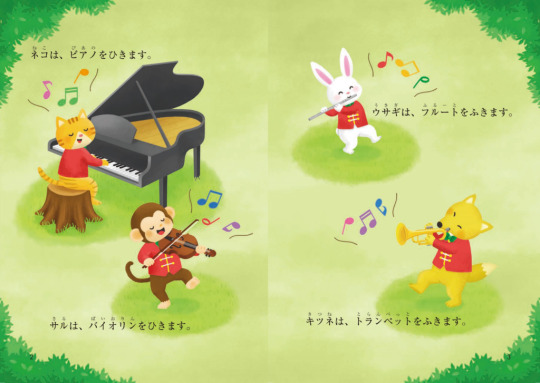
All these texts for absolute beginners will get you started reading in Japanese with very little knowledge of characters and vocabulary.
Reading in Japanese is a skill that requires practice. But once you get used to it, it can be such a valuable tool to reinforce new vocabulary and grammar. So please don't wait until you're "ready" before you start reading - start early at your own level!
#my book reviews#reading in japanese#study japanese#learning japanese#日本語#japanese books#やさしい日本語#free graded readers#free tadoku graded readers#nihongo tadoku dōjō#absolute beginner level#japanese langblr#japanese language#japanese reading comprehension#japanese free reading resources#japanese reading resources
1K notes
·
View notes
Text
Do you have issues with communicating effectively? Are you dealing with a disorder that impairs speech? Speech therapy can help address these issues and improve your overall quality of life. Read below for more information, and check with your physician for speech therapy evaluation.
0 notes